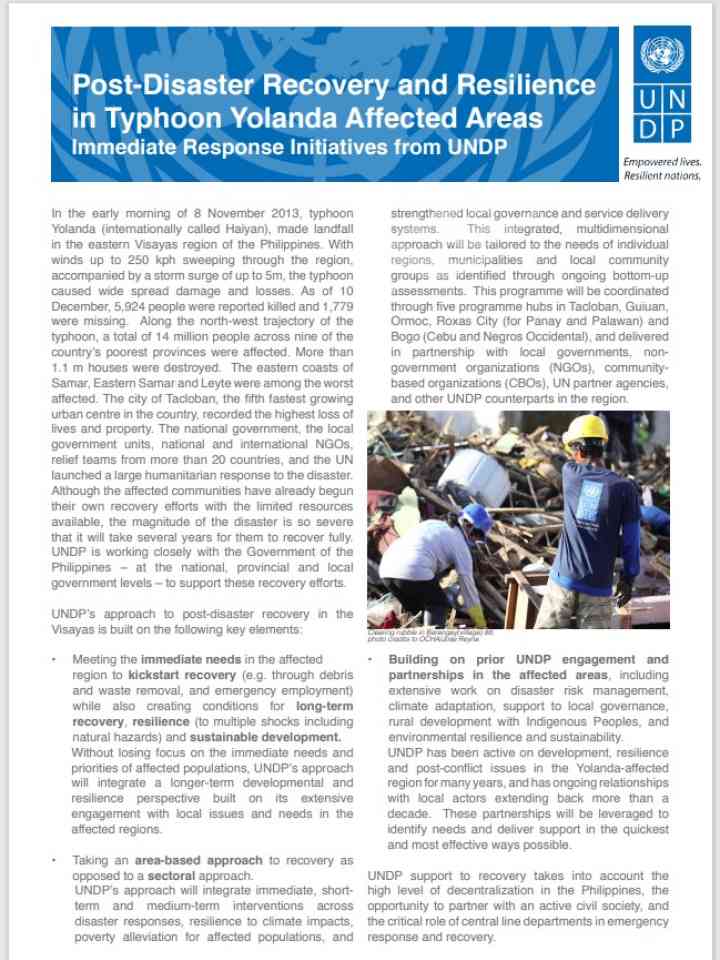Post-Disaster Recovery and Resilience in Typhoon Yolanda Affected Areas - Immediate Response Initiatives from UNDP
In the early morning of 8 November 2013, typhoon Yolanda (internationally called Haiyan), made landfall in the eastern Visayas region of the Philippines. With winds up to 250 kph sweeping through the region, accompanied by a storm surge of up to 5m, the typhoon caused wide spread damage and losses. As of 10 December, 5,924 people were reported killed and 1,779 were missing. Along the north-west trajectory of the typhoon, a total of 14 million people across nine of the country's poorest provinces were affected. More than 1.1 m houses were destroyed. The eastern coasts of Samar, Eastern Samar and Leyte were among the worst affected. The city of Tacloban, the fifth fastest growing urban centre in the country, recorded the highest loss of lives and property.
The national government, the local government units, national and international NGOs, relief teams from more than 20 countries, and the UN launched a large humanitarian response to the disaster. Although the affected communities have already begun their own recovery efforts with the limited resources available, the magnitude of the disaster is so severe that it will take several years for them to recover fully.
UNDP is working closely with the Government of the Philippines – at the national, provincial and local government levels – to support these recovery efforts along the following pillars:
I. Support to local governments for managing recovery
II. Livelihood restoration
III. Disaster risk reduction and Environmental Resilience
IV. National-level support to response systems and capacities
Explore further
